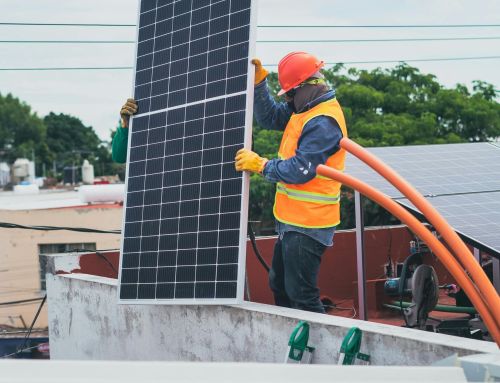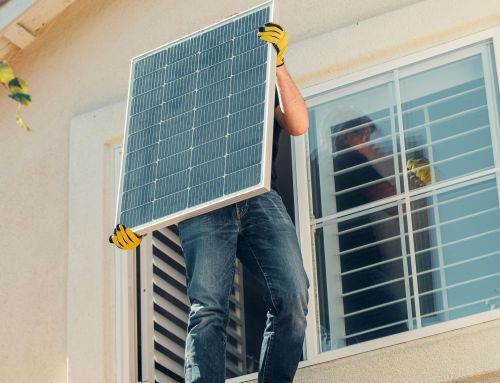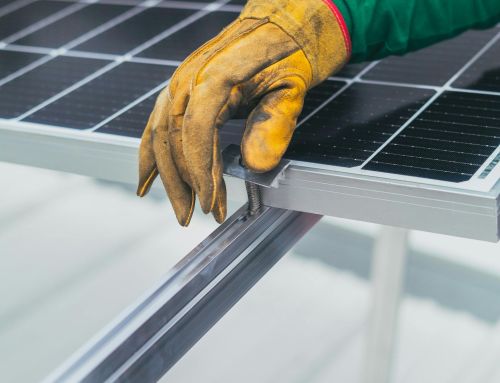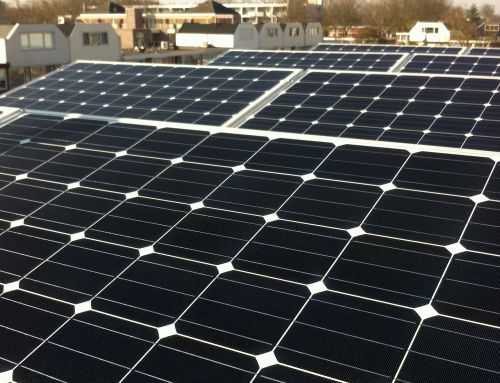Thinking about making the switch to solar power? It’s a fantastic decision! But with all the technical jargon and unfamiliar terms, figuring out the right size solar system for your home can feel overwhelming.
But don’t worry, this article will guide you through the process of calculating what size solar system you need.
So, let’s first address a common question: how to size a solar panel? While individual solar panels come in various wattages (their power output), the size of your entire solar system refers to its total power generation capacity. This capacity depends on the number of panels you install and their individual wattage.
Now, back to the fun part – calculating the ideal system size for your home! Here are some key factors to consider:
1. How Much Electricity Do You Use?
The first step is understanding how much electricity your home consumes or the average monthly electricity usage.
Take a peek at your electricity bills. Look for the section displaying kilowatt-hours (kWh) – that’s the energy you use in a month.
Pro Tip: If you haven’t kept past bills, most electricity providers offer online account portals where you can access past usage data.
2. Sun Power Potential: How Much Sunshine Does Your Roof Get?

Here’s the good news: the sun is a powerful energy source, but it doesn’t shine equally everywhere. So, the amount of sunshine your roof receives plays a crucial role in determining how much energy your solar system can generate.
Here are a few things to consider:
• Location, Location, Location: Generally, areas with more sunlight hours are better suited for solar power generation.
• Sun Exposure Throughout the Day: Ideally, your roof should receive direct sunlight for a good portion of the day, especially during peak sun hours.
• Shading Woes: Trees, buildings, or other obstructions can significantly impact the amount of sunlight reaching your roof.
Don’t worry! You don’t necessarily need a fancy tool to assess your roof’s sun exposure.
Observing shadow patterns throughout the day can give you a good idea. Additionally, online tools and solar resource maps can provide more detailed information.
3. Setting Goals: How Much of Your Energy Bill Do You Want to Offset?
Here comes the fun part: setting your solar goals! Do you want to completely eliminate your electricity bills? Or perhaps aim for a significant reduction?
Some common goals to consider:
• Net-Zero Energy: This ambitious goal means your solar system generates enough electricity to completely offset your home’s energy needs.
• Significant Bill Reduction: Aiming for a 50% or 70% reduction in your electricity bill with solar power is a popular choice.
• Offsetting Specific Appliances: Maybe you want to focus on powering your fridge or air conditioner with solar energy.
Remember: Your goals will influence the size of your solar system.
4. Budget Matters: How Much Can You Invest?
Solar panels are an investment, and the cost can vary depending on system size, panel type, and installation complexities. It’s essential to have a realistic budget in mind.
The Good News: Solar power offers long-term savings on electricity bills, and many governments offer incentives like rebates and tax credits to make solar panels more affordable.
5. Putting it All Together: Estimating Solar System Size

Now that you’ve considered these factors, let’s estimate a ballpark size for your solar system. Here’s a simplified formula:
Average Daily Electricity Usage (kWh) / Peak Sun Hours (in your location) = Kilowatts (kW) of solar system needed
Remember: This is a basic formula, and a professional solar installer can provide a more accurate assessment based on your specific circumstances.
Here’s an example: Let’s say your average daily electricity usage is 10 kWh, and your location gets an average of 5 peak sun hours per day. Following the formula:
10 kWh / 5 hours/day = 2 kW
This is a simplified example, but it gives you a starting point.
Beyond the Formula: Don’t forget to factor in your goals and budget. If you aim for a 70% bill reduction, you might need a larger system than the basic calculation suggests.
The Final Step: Consulting a Solar Expert
While this article has equipped you with the basics of calculating what size solar system you need, it’s crucial to consult a professional solar installer.
A solar installer can assess your home’s energy needs, evaluate your roof’s suitability, and provide a personalized recommendation for your solar system size.
They can also help you navigate the complexities of government incentives and financing options.
Prolectrix is here to help you make the most of solar energy for your home. Our team of experienced solar installers can provide you with a comprehensive assessment and guide you through the process of installing a solar panel system that meets your specific needs and goals.
Conclusion
Determining the right size solar system for your home requires careful consideration of various factors.
By understanding your energy consumption, assessing your roof’s sun exposure, setting clear goals, and consulting with a solar expert, you can make an informed decision and reap the benefits of solar power.
Remember, the journey to a sustainable and energy-efficient home starts with understanding your solar needs. Contact Prolectrix today to schedule a free consultation and reap the rewards.





